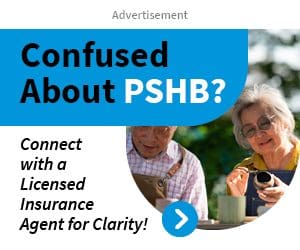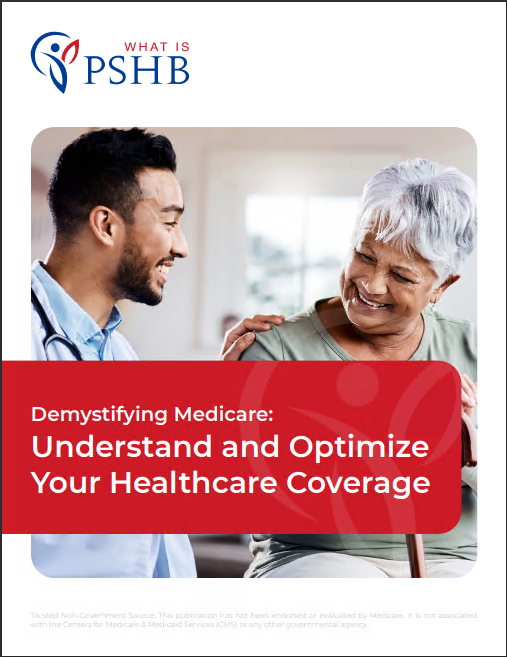Key Takeaways
- USPS retirees should understand the various Medicare enrollment periods to avoid late penalties and ensure continuous coverage.
- Coordinating Medicare with existing USPS health benefits can help maximize coverage and minimize out-of-pocket costs.
Medicare Enrollment: 5 Tips for USPS Retirees
Navigating the transition from active employment to retirement is a significant change, especially when it comes to managing healthcare coverage. For United States Postal Service (USPS) retirees, understanding Medicare enrollment options is crucial to ensuring comprehensive health benefits. This article provides five essential tips for USPS retirees on how to effectively enroll in Medicare and optimize their healthcare coverage.
1. Understand the Different Medicare Enrollment Periods
One of the most critical aspects of enrolling in Medicare is understanding the various enrollment periods. Missing these windows can result in late enrollment penalties and gaps in coverage.
Initial Enrollment Period (IEP)
The Initial Enrollment Period is a seven-month window surrounding your 65th birthday. It starts three months before you turn 65, includes your birthday month, and ends three months after. During this period, you should enroll in Medicare Part A (hospital insurance) and Part B (medical insurance). Enrolling during your IEP ensures that you avoid late enrollment penalties and start your coverage promptly.
General Enrollment Period (GEP)
If you miss your Initial Enrollment Period, you can enroll during the General Enrollment Period, which runs from January 1 to March 31 each year. However, coverage won’t start until July 1, and you may incur a late enrollment penalty for Part B, which is a 10% increase in your premium for each 12-month period you were eligible but did not enroll.
Special Enrollment Period (SEP)
USPS retirees who continue to work past age 65 and are covered by their employer’s health plan can delay enrolling in Medicare without penalty. When you retire, you will qualify for a Special Enrollment Period. This period lasts eight months from the month your employment ends or your group health coverage ends, whichever comes first. During this SEP, you can enroll in Part A and Part B without facing late enrollment penalties.
Medicare Advantage Open Enrollment Period
For those who have enrolled in a Medicare Advantage Plan (Part C), there is an annual Medicare Advantage Open Enrollment Period from January 1 to March 31. During this time, you can switch to another Medicare Advantage Plan or return to Original Medicare.
2. Evaluate Your Health Needs and Medicare Options
Choosing the right Medicare coverage involves evaluating your health needs and understanding the different parts of Medicare.
Medicare Part A and Part B
- Part A (Hospital Insurance): Covers inpatient hospital care, skilled nursing facility care, hospice care, and some home health care.
- Part B (Medical Insurance): Covers outpatient care, doctor visits, preventive services, and some home health care.
Medicare Part C (Medicare Advantage)
Medicare Advantage Plans are offered by private insurance companies approved by Medicare. These plans provide all Part A and Part B benefits and often include additional services such as vision, dental, and hearing care. Some Medicare Advantage Plans also offer prescription drug coverage.
Medicare Part D (Prescription Drug Coverage)
Part D plans cover the cost of prescription medications. Each plan has its formulary, or list of covered drugs, so it’s essential to choose a plan that includes your necessary medications.
Medigap (Medicare Supplement Insurance)
Medigap policies help pay for costs not covered by Original Medicare, such as copayments, coinsurance, and deductibles. These plans are offered by private insurance companies and can provide additional financial protection.
3. Coordinate Medicare with USPS Health Benefits
USPS retirees often have health benefits through the Postal Service Health Benefits (PSHB) Program. Understanding how to coordinate these benefits with Medicare can maximize your coverage and reduce out-of-pocket costs.
Primary and Secondary Coverage
When you retire and become eligible for Medicare, Medicare typically becomes your primary insurer, and your PSHB plan acts as secondary coverage. This means Medicare will pay first for covered services, and your PSHB plan will cover some or all of the remaining costs, such as copayments, coinsurance, and deductibles.
Enroll in Medicare on Time
Ensure you enroll in Medicare when you first become eligible to avoid late enrollment penalties and ensure seamless coverage. Failure to do so can result in your PSHB plan providing less comprehensive coverage and higher out-of-pocket costs.
Understand Your PSHB Plan Options
Review your PSHB plan options annually during the PSHB Open Season to ensure your coverage aligns with your healthcare needs. Compare the benefits, costs, and provider networks of different plans to find the best fit.
4. Utilize Preventive Services and Wellness Programs
Medicare offers a range of preventive services to help maintain your health and catch potential issues early. Taking advantage of these services can improve your overall well-being and reduce healthcare costs.
Annual Wellness Visit
Medicare covers an annual wellness visit, which includes developing or updating a personalized prevention plan based on your health and risk factors. This visit is an excellent opportunity to discuss any health concerns with your doctor and create a plan for managing your health.
Screenings and Vaccinations
Medicare covers various preventive screenings and vaccinations, such as:
- Cardiovascular disease screenings
- Diabetes screenings
- Cancer screenings (e.g., mammograms, colonoscopies)
- Flu shots, pneumococcal vaccines, and hepatitis B shots
Wellness Programs
Many Medicare Advantage Plans and some PSHB plans offer wellness programs that promote healthy living through fitness classes, health education, and preventive care initiatives. Participating in these programs can help you stay active and engaged in your health.
5. Seek Professional Advice
Navigating the complexities of Medicare and USPS health benefits can be challenging. Seeking professional advice can provide valuable insights and ensure you make informed decisions about your healthcare coverage.
Licensed Insurance Agents
Consulting with licensed insurance agents who specialize in Medicare can help you understand your options, compare plans, and find the best coverage for your needs. These professionals can provide personalized guidance and assist with the enrollment process.
Benefits Advisors
Benefits advisors, such as those available through USPS, can help you understand how your PSHB plan coordinates with Medicare and assist with any questions or concerns you may have about your coverage.
Financial Planners
Working with a financial planner can help you integrate healthcare costs into your overall retirement plan. They can provide advice on budgeting for medical expenses, managing out-of-pocket costs, and optimizing your retirement savings.
Making the Most of Your Healthcare Coverage
Ensuring comprehensive healthcare coverage as a USPS retiree involves understanding the different Medicare enrollment periods, evaluating your health needs, coordinating benefits, utilizing preventive services, and seeking professional advice. By following these tips, you can navigate the complexities of Medicare and USPS health benefits, maximize your coverage, and maintain your health and well-being throughout retirement.
Contact Information:
Email: [email protected]
Phone: 9725550123












